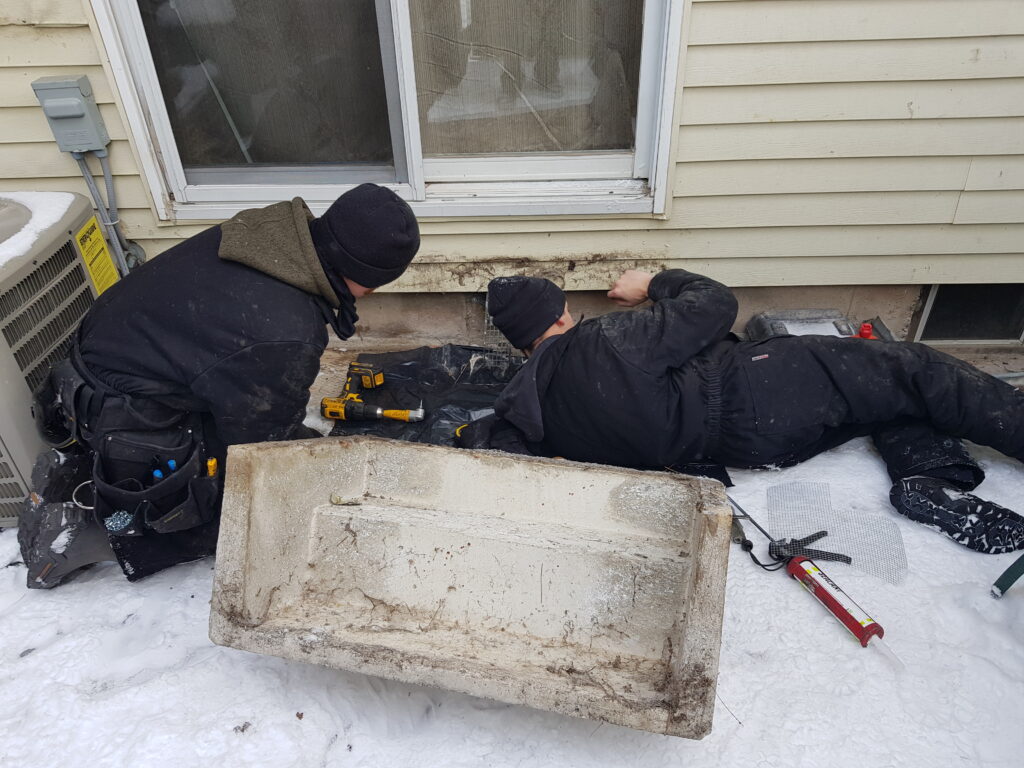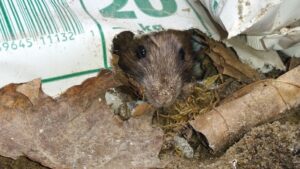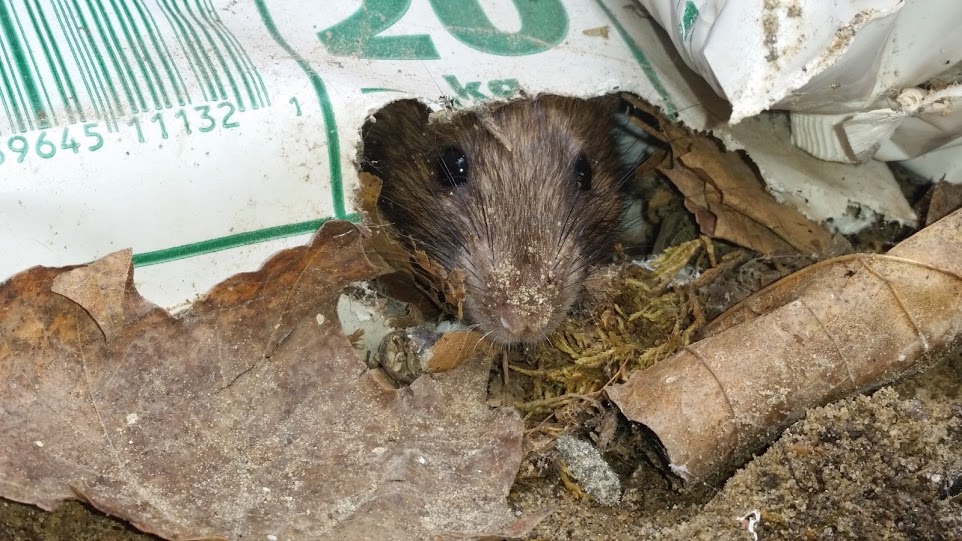When it comes to protecting your home, understanding the various types of critters that could cause you trouble is the first line of defense. In this blog, we’ll dive deep into the world of rodents, specifically mice and rats.
We’ll explore the unique differences between these two creatures and why it’s crucial for homeowners to distinguish between the two. Knowledge is power when it comes to safeguarding your property. You’ll learn about signs of a bad mice infestation, the telltale signs of an invading rodent presence, and your options for home protection.
We’ll then discuss the valuable role a wildlife technician can play in freeing your home from these pesky intruders. Finally, we’ll open your eyes to the benefits of choosing a professional removal service over the DIY route. By the end of this blog, we’re confident you’ll have the necessary knowledge to make informed decisions about wildlife control for your Hamilton home.
What are the Key Differences Between Rats and Mice?
When it comes to identifying the difference between a mouse and a rat, there are several key distinctions to keep in mind. Understanding these differences goes a long way in facilitating appropriate mice removal or dealing with any sort of rat infestation.
- Size: One of the simplest ways to differentiate between these two rodents is by their size. Mice are typically much smaller than rats. A mouse’s body length is around 3-4 inches while a rat can grow to be between 9-11 inches long.
- Tails: Rats have noticeably longer tails compared to mice. Also, a rat’s tail is usually hairless and scaly, whereas a mouse’s tail is more uniformly covered with tiny hairs.
- Ears: Additionally, the size and shape of their ears vary. Mice possess larger ears in relation to their head while rat’s ears are relatively smaller and less pronounced.
- Droppings: Mouse droppings are small with pointed ends, while rat droppings are larger, thicker, and have blunt ends.
If you have signs of a bad mice infestation or suspect an unwelcome rat guest, these differentiators can help identify your problem and empower you to deal with it effectively.
What Risks Do Rats and Mice Pose to Homeowners?
Certainly, the differences can help identify whether it’s a rat or a mouse infiltrating your home, but both come with their own set of risks. Let’s break down some of the potential hazards that may intimidate the peace and safety of your home.
Health Hazards
Both rats and mice are known for spreading diseases. They can transfer over 35 diseases to human beings either directly – through handling, bites, or their dead bodies – or indirectly – through ticks, mites, and fleas.
Such diseases include Rat Bite Fever, Hantavirus, Plague, and Leptospirosis, among others. You certainly wouldn’t want your family or pets to catch such infections.
Property Damage
Rats and mice wreak havoc with their sharp teeth, constantly gnawing on wood and wiring, which can lead to costly damages. Imagine a small mouse causing a significant structure weakness or even a distressed rat sparking a fire by chewing electrical wires! It’s a startling thought, but these are real scenarios that highlight the necessity of prompt mice removal in homes.
Contamination of Food
These crafty creatures also carry the risk of contaminating your food and surface areas, leading to severe foodborne illnesses. What might look undisturbed might have been a buffet for a rodent, leaving behind harmful bacteria and pathogens. These subtle signs can often go unnoticed till the problem worsens, underscoring the essentiality of maintaining constant vigilance within your home environment.
Increased Infestation
Lastly, mouse or rat infestation quickly spirals out of control due to their high reproduction rate. A single pair of mice can result in over a hundred offspring in a year, transforming a minor issue into a significant problem. It is crucial to spot signs of a rodent problem early to prevent potential health risks and extensive property damage.
In summary, an infestation of either rats or mice is not something to take lightly. As the old saying goes, it’s always better to be safe than sorry, especially when protecting your home.

How Can Homeowners Protect Their Homes Against Rats and Mice?
Whether you are currently dealing with a rodent problem or hoping to prevent one, the first step in protecting your home necessitates an understanding of the physical and behavioural differences between mice and rats. The crucial difference between a mouse and a rat lies in their size, with rats being considerably larger and more aggressive. Mice on the other hand, while smaller, multiply rapidly and can cause damage more sneakily, representing different types of threats. Knowing these differences can help identify the signs of a bad mice infestation or rat problem.
Rodent Prevention Measures
Several straightforward steps can be taken to discourage these unwelcome guests from making your home their safe haven:
- Seal any openings: Mice can squeeze through gaps as small as a pencil’s diameter, while rats can fit through holes the size of a quarter. Ensure that all possible entrances are properly sealed. Consider using materials like steel wool or caulking to reinforce these seals, as rodents can gnaw through weaker materials easily.
- Properly store food: Rodents are attracted to easy food sources. You can eliminate one of their primary motivators by maintaining cleanliness in your kitchen and properly storing food in airtight containers. This not only helps prevent the intrusion of rodents but also plays an integral role in safeguarding the quality of your food.
- Maintain your yard: Tall grass, clutter, and standing water can all attract rodents. Regularly trimming vegetation and removing potential nesting sites can deter their presence. Additionally, properly sealing garbage bins and compost heaps can significantly reduce food sources that would otherwise attract these unwanted guests.
While it’s certainly alluring to tackle rodent issues yourself in an effort to save money, the potential risks and complications can make the DIY path costlier in the long run. Therefore, professional intervention is especially necessary in controlling and eliminating mice infestations, preventing damage and health hazards.
What are the Various Options Available for Removing Rodents from Homes?
Managing rodents in your home can be quite challenging. The type of approach you choose will largely depend on whether you’re dealing with a mouse or a rat. Remember, no single method is entirely perfect; however, using a blend of tactics often provides the best results.
Effective Practices for Wildlife Removal
- Monitoring and Sealing Entry Points: Regular checks and sealing of possible entry points can help prevent any rodent infestation. This includes gaps, cracks, and openings around doors or windows and other potential access points. Ensure to pay particular attention to spots where pipes or wires enter your residence, as these are often overlooked routes for invasion.
- Keeping a Clean Environment: Hygiene plays a significant role in deterring rodents. Effective measures include proper food storage and waste disposal. Additionally, regular cleaning and disinfecting of your home can significantly reduce the likelihood of both mice and rat infestations, ensuring a safer and healthier living space.

What are the Benefits of Hiring a Professional Rodent Removal Service?
When faced with a rodent problem, many homeowners may attempt to address the issue on their own. However, the true intricacies of effective rodent control often make it a task best left to professionals. A professional removal service has the right training, tools, and experience to handle your rodent problem quickly, efficiently, and, most importantly, safely.
Professional rodent removal services offer numerous benefits:
- Experience: The teams are composed of trained professionals who know exactly what signs of infestation to look for, the difference between a mouse and a rat, and the most effective removal techniques.
- Tools and Equipment: Specialized removal equipment is crucial for a successful job. Professionals have access to the latest technology and highest quality tools, ensuring the rodent infestation is eliminated.
- Safety: Removal can involve some risk, including disease transmission and physical injury. Professionals are trained to mitigate these risks, offering you peace of mind.
- Follow-up Services: After the initial removal service, professional companies like ours provide follow-up services to ensure your home remains rodent-free.
The Advisory Role of Wildlife Technicians
Despite your best efforts, you may still find signs of activity. Engaging the services of a trained wildlife technician provides homeowners with a more comprehensive, professional approach to mice removal. They have a keen understanding of rodent behaviour and can spot signs of infestation you might miss. Additionally, they possess the right tools and skills to handle these pests safely and humanely.
Remember, timely intervention is key to preventing large-scale infestations and the associated risks. If you suspect the presence of rats or mice in your home, don’t hesitate to reach out to our experts at Skedaddle Humane Wildlife Control to keep your Hamilton home safe.
Contact us to request a quote and learn more about how we can help you ensure a rodent-free home. As Skedaddle Humane Wildlife Control we believe in protecting your home from the dangers of rodent infestations while ensuring the safety and welfare of the involved animals.



